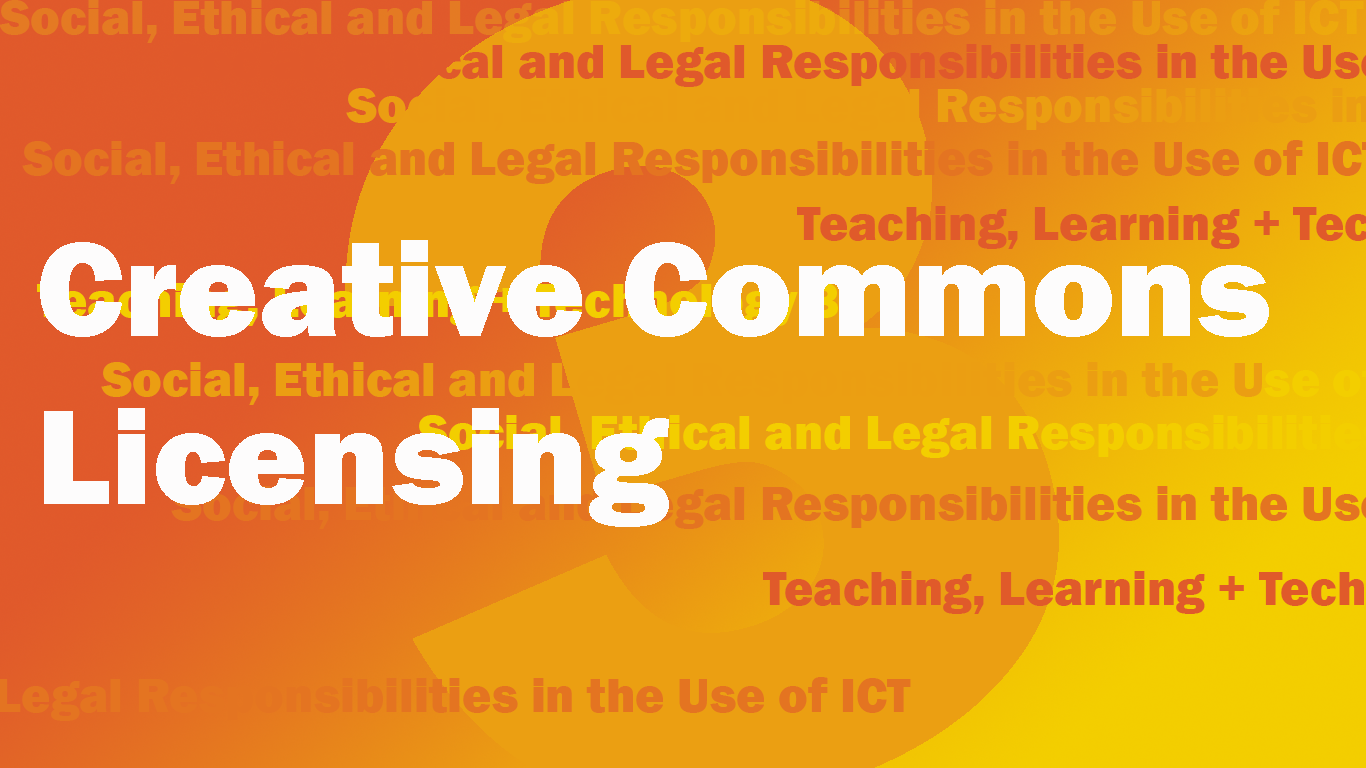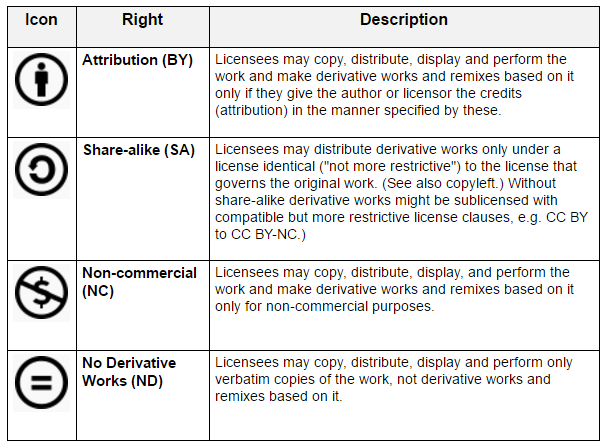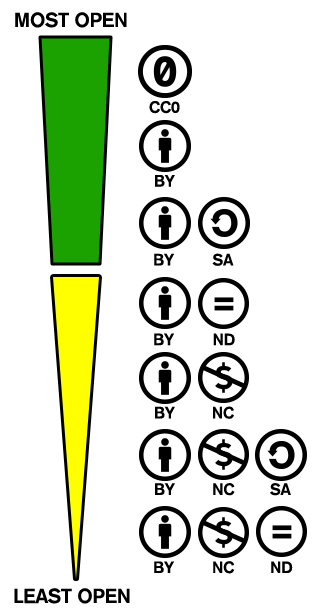Creative Commons Licensing
In recent years, Creative Commons (CC) has, in education, become the most popular licensing system. Creative Commons has designed a collection of licences to ensure that there is a suitable licence for sharing content under various conditions.

In recent years, Creative Commons (CC) has, in education, become the most popular licensing system. Creative Commons has designed a collection of licences to ensure that there is a suitable licence for sharing content under various conditions. The advantages of using a Creative Commons licence are:
- There is almost certainly a ready-made licence that will suit the publisher’s requirements, saving time and effort in drawing up a custom licence.
- Creative Commons licences are easily understood and commonly used, so a potential reader or reuser of a work will immediately understand the conditions of the licence.
- The licences have machine-readable metadata to make it easier for others to find a CC-licensed resource on the Web.
- The Creative Commons licences are based on the following:
- Legal code: Expansive legal language, tested in several cases.
- Commons code: Simple, icon-based approach to recognise the features of a licence.
- Digital code: Enables search engines to locate resources using CC Rights Expression Language.
![]()
All Creative Commons licences are constructed from a combination of four specific “rights” or conditions that can be reserved by the creator or author of the resource. These include the following;

The most popular combinations of Creative Commons rights or conditions make up these six licences:
While all of these six Creative Commons licences are more open than full copyright (i.e., all rights reserved), some are more open than others. The diagram below illustrates the relative restrictiveness of each licence.

It is up to the author or creator of the resource to determine how open the new resource’s licence should be and to choose the appropriate licence. The less restrictive the licence, the more useful the resource can potentially be for other educators.